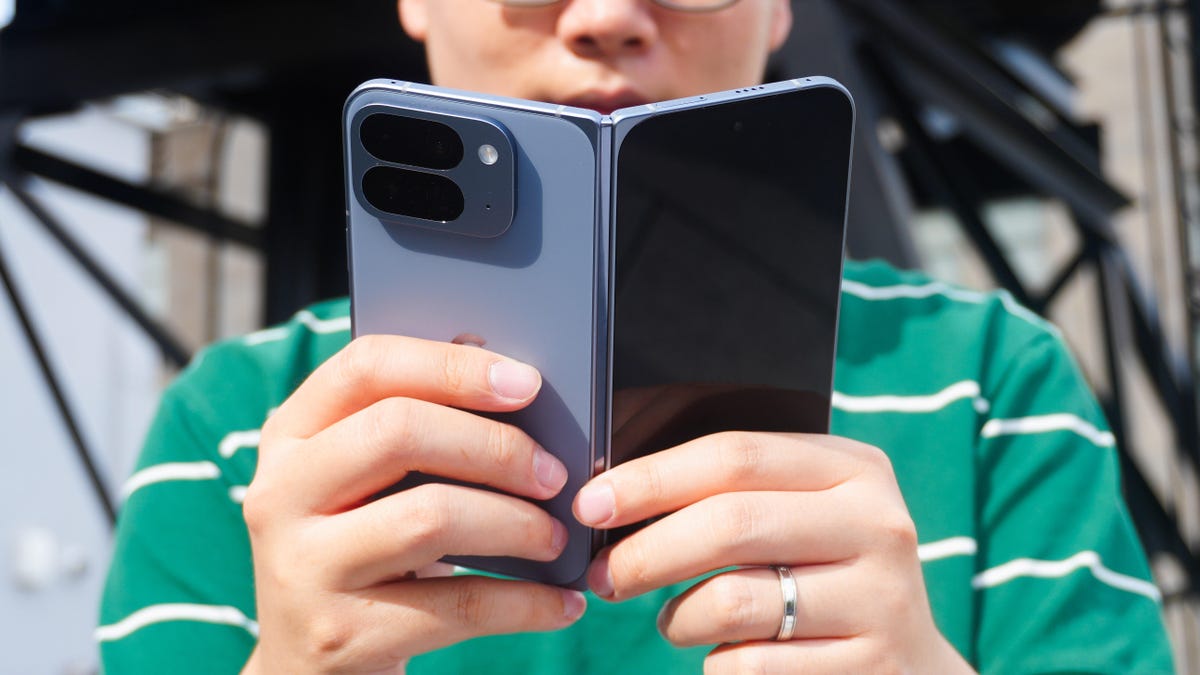Follow ZDNET: Add us as a preferred source on Google.
ZDNET’s key takeaways
- eSIM management became an initial, frustrating, time-consuming challenge.
- T-Mobile now offers a surprisingly seamless eSIM transfer within its app.
- iOS Quick Transfer also works well for moving eSIMs between devices.
As a mobile reviewer, I spend a lot of time on phones, but I also spend comparatively little time on each individual phone I review. The constant cycle of swapping from handset to handset as they launch throughout the year has made one aspect of my life a delight — the SIM card. Not to be mistaken with eSIM.
Also: eSIM vs. SIM: What’s the difference?
It’s no big deal to pop the SIM card out of one phone and move it over to another as my assignments (or my flights of fancy) dictate. But all that started to change when Apple moved to an eSIM-only model in the United States two years ago. The first year, I got the iPhone 14 in for review and had to move my main T-Mobile SIM over to it, and so, as a tech reviewer, I decided I wanted to stay on eSIMs for as long as I could.
I lasted about four months.
The following January, it just became way too much of a hassle to call T-Mobile, explain to them why I wanted to switch my SIM, say, “No, thank you. I don’t want to buy a brand new phone; I already have one,” and go through that whole process. It was a mess.
The Google Pixel 10 series loses the physical SIM card slot in favor of eSIM.
Joseph Maldonado/ZDNET
So, this year, when Google launched the Pixel 10 series of phones, also withholding the SIM tray, I was prepared to do battle once again. I figured that at least the Pixel and iPhones launched so close to each other that I could just deal with it for a couple of months and go right back to my reliable SIM card.
But in order to do that, I needed to first move my SIM from the Google Pixel 10 Pro to the iPhone…
…and it was…kind of easy?
Why eSIMs?
Swapping SIM cards is simple, as long as you have a SIM ejector tool (or a paper clip). You just take the card out of one phone and insert it into the new phone. Inside the phone, pins make contact with the SIM card in order to read it.
The card carries the information your phone needs to connect to the network. An eSIM basically has the electronic components needed to connect to the network hard-wired into the phone directly, as opposed to requiring a coded chip.
Also: How to clear your Android phone cache (and fix slow performance for good)
Carriers and phone makers like eSIMs for various reasons. Most notably, eSIM chips take up even less space inside a phone, freeing up valuable millimeters of internal space for more components, better airflow, or even a larger battery inside the phone casing. eSIMs also remove the SIM ejector tray, eliminating another hole in the phone, a.k.a. a point of ingress for water and dust, making the phone that much less susceptible to damage.
If we’re being totally honest here, there’s also the lock-in effect. Removing the ability to quickly jump from phone to phone willy-nilly might make people stay with their phone (and their carrier) for that much longer.
How it’s going
Since I first moved into the Pixel 10 Pro, I have swapped SIMs for both of my lines many times, hopping between phones from Google, Samsung, and yes, even Apple almost seamlessly.
T-Mobile, as it turns out, hasn’t been resting on its laurels for the past two years. It has actually built the ability to switch SIMs into its T-Life app. Here’s the process for it: Open the T-Life app, go to Manage, tap the line you want to move, tap “SIM transfer or activation,” and follow the prompts from there. Eventually, you’ll be asked to enter the IMEI and the EID of the destination device, and that’s it.
It takes a minute, but you’ll get text messages saying the transfer was complete. In some cases, you then need to go into settings on the destination device and activate the eSIM, but I haven’t found that to be the case for every phone.
Also: How to restart your Android phone without the power button: 2 easy ways
The iPhone also has a SIM transfer method, which is similar but doesn’t involve the carrier. Yes, it works from an iPhone to an Android phone as well. I’ve done this a dozen or so times since initially setting up the Pixel, and it has been mostly seamless every time.
One thing to improve
The only thing that T-Mobile could (and should) do to make the process easier is to integrate an “install eSIM onto this phone” button that you can access after you enter your username/password and even 2FA info. Mint Mobile (a subsidiary of T-Mobile, actually) has a similar method, and I would love to see T-Mobile adopt it.
The key benefit is that you don’t have to type in the incredibly long IMEI and EID numbers to make the switch.
As of right now, the biggest flaw that T-Mobile has is that the phone you’re using to swap eSIMs has to be activated on T-Mobile’s network in order to start the switch. Depending on your account’s permissions, you must also be the primary account holder to do it.
I can (and have) log in to the T-Life app on dozens of phones, so in theory I should be able to initiate the swap from a non-active phone, but T-Mobile currently prevents that, so that’s a bummer.
Also: The best Android phones to buy in 2025
But beyond that, the process has been remarkably simple, and I love the fact that carriers are keeping up with this technology. Apple (and now Google) has forced its hand, but at least it’s a relatively simple and evolving process now. I also realize that this experience is limited to just T-Mobile, so naturally, your mileage may vary.
For now, while the process isn’t nearly as easy as moving a chip from one phone to another, I’m reasonably sure I can put SIM cards into the rearview mirror, even as a tech reviewer who changes phones as often as I change my shoes.


